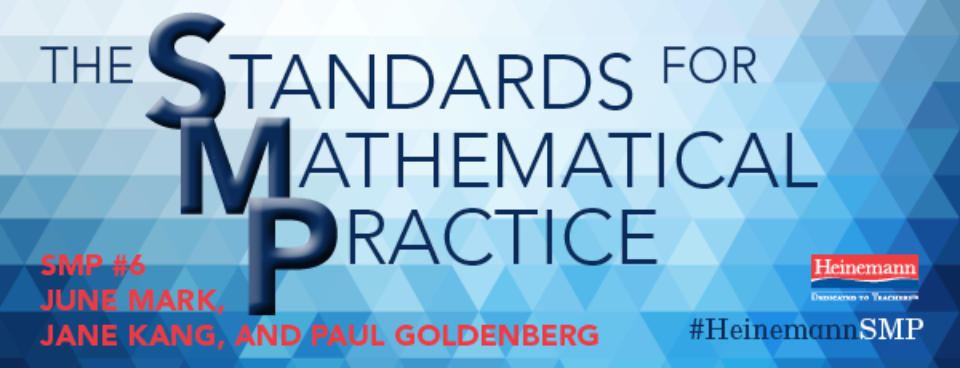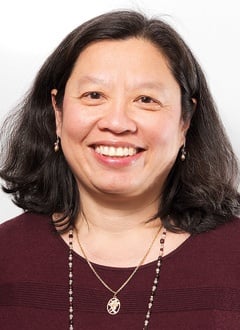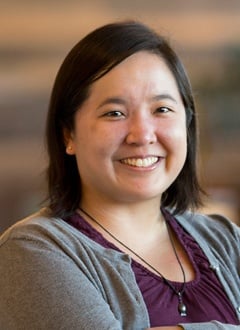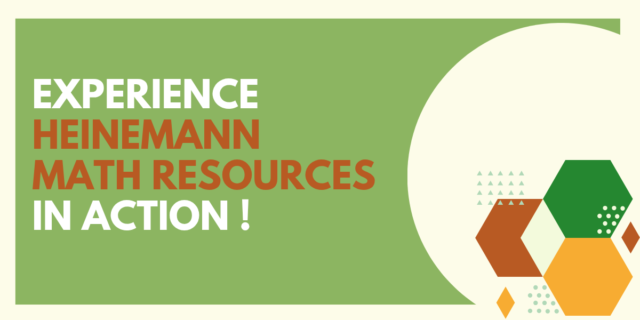
By June Mark, Paul Goldenberg, and Jane Kang (@EDCtweets), Education Development Center, coauthors of Transition to Algebra.
The word “precision” calls to mind accuracy and correctness. While accuracy in calculation is a part, clarity in communication is the main intent.
The habit of striving for clarity, simplicity, and precision in both speech and writing is of great value in any field. In casual language, we use context and people’s reasonable expectations to disambiguate meanings so that we don’t burden our communication with specifics and details that the reader/listener can be expected to surmise anyway. But in mathematics, we base each new idea logically on earlier ones; to do so “safely,” we must not leave room for ambiguity.

Communication is hard; it takes years to learn how to be precise and clear, and the skill often eludes even highly educated adults. How do we teach students to exhibit this standard?
Defining terms is important, but children (and, to a lesser extent, even adults) rarely learn new words effectively from definitions. Virtually all vocabulary is acquired from use in context. Children build their own working definitions based on their initial experiences. Over time, as they hear and use words in other contexts, they refine their working definitions, making them more precise. For example, baby might first use dada for all men, and only later for one specific man. In mathematics, too, students can work with ideas without having started with a precise definition. With experience, the concepts become more precise, and the vocabulary with which we name the concepts can, accordingly, carry more precise meanings.
Striving for precision is also a way to refine understanding. By forcing an insight into precise language (natural language or mathematical symbols), we come to understand it better ourselves. For example, learners often trip over the order relationships of negative numbers until they find a way to reconcile their new learning (–12 is less than –6) with prior knowledge: 12 is bigger than 6, and –12 is twice –6, both of which pull for a feeling that –12 is the “bigger” number. Having ways to express the two kinds of “bigness” helps distinguish them. Learners could acquire technical vocabulary, like magnitude or absolute value, or could just refer to the greater distance from 0, but being precise about what is “bigger” about –12 helps clarify thinking about what is not bigger.
Here are some ways for teachers and students to develop greater clarity and precision:
- Use familiar vocabulary to help specify which object(s) are being discussed—which number or symbol, which feature of a geometric object—using specific attributes, if necessary, to clarify meaning. Pointing at a rectangle from far away and saying, “No, no, that line, the long one, there,” is less clear than saying “The vertical line on the right side of the rectangle.” Or compare “If you add three numbers and you get even, then all the numbers are even or one of them is even” with “If you add exactly three whole numbers and the sum is even, then either all three of the numbers must be even or exactly one of them must be even.”
- Use written symbols correctly. In particular, the equal sign (=) is used only between complete expressions, and it signals the equality of those two expressions. To explain one way to add 34 + 65, we sometimes see it written (incorrectly) this way: 30 + 60 = 90 + 4 = 94 + 5 = 99. This is a correct sequence of calculator buttons for this process, but not a correct written expression: 30 + 60 doesn’t equal 90 + 4; only the last equals sign is correctly used. We need the = sign to have a single and specific meaning. Also, the equal sign should not be misused to mean “corresponds to”: writing “4 boys = 8 legs” is incorrect.
- Precision often means including units when specifying numerical quantities. But not always. The purpose of precision is never to create work, only to create clarity. Sometimes a number is clear by itself, other times a unit is needed, sometimes a whole sentence is required: the situation determines the need. For the same reason, label graphs and diagrams sufficiently to make their meaning and the meanings of their parts clear.
- As students develop mathematical language, they learn to use algebraic notation to express what they already know and to translate among words, symbols, and diagrams. Possibly the most profound idea is giving names to objects. When we give numbers names, not just values, then we can talk about general cases and not just specific ones. For example, when we see that 4´6 is one less than 5´5, and that 6´8 is one less than 7´7, and check that pattern a few more times, we might guess that 29´31 is one less than 30´30, but saying that pattern in a general way is difficult without using a “name” for the numbers. One doesn’t need formal algebra: the idea, not the notation, is the important part, and simply by naming one number “middle” and the other two as “middle + 1” and “middle – 1” will suffice. For any three consecutive numbers, (middle – 1) ´ (middle + 1) = (middle ´ middle) – 1. That’s complete and precise with no formalisms.
Correct use of mathematical terms, symbols, and conventions can always achieve mathematical precision but can also produce speech and writing that is opaque, especially to learners, often to teachers, and sometimes even to mathematicians. “Good mathematical hygiene” therefore requires being absolutely correct, but with the right simplicity of language and lack of ambiguity to maintain both correctness and complete clarity to the intended audience.
♦ ♦ ♦ ♦



June Mark, Paul Goldenberg, and Jane Kang work in the Learning and Teaching Division at Education Development Center (EDC) in Waltham, Massachusetts. EDC is a non-profit organization that designs, implements, and evaluates programs to improve education, health, and economic opportunity worldwide. They are coauthors of the Transition to Algebra program, a research-based classroom resource designed to support student success in algebra by helping them shift their ways of thinking from the concrete procedures of arithmetic to the abstract reasoning that algebra requires. They are also coauthors of the upcoming book, Making Sense of Algebra. Follow EDC on Twitter @EDCtweets.
♦ ♦ ♦ ♦
Next week, Paul, June, and Jane look at SMP #7: Look for and make use of structure.


